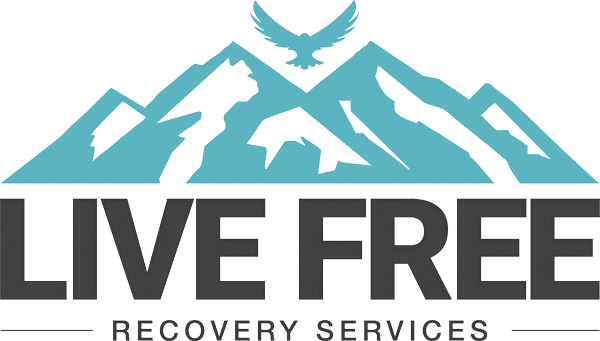
For a long time, insurance companies didn’t consider mental health and substance use disorders (SUDs) as important as physical health. Going without treatment for these disorders can be a debilitating and potentially life-threatening situation. Whether you have Aetna health insurance through your employer, purchased on your own, or through the Affordable Care Act (ACA), your plan now includes using Aetna insurance coverage for the treatment of any of your mental or substance use disorders.
Table of Contents
Why is Coverage for Mental Health and SUDs Important?
This coverage is important because if you have a SUD, there is a good chance that you have a co-occurring mental condition. Many people who become dependent on drugs or alcohol start misusing substances as a way to medicate themselves from the effects of their mental condition.
The Journal of the American Medical Association (JAMA) reported that 37% of alcohol abusers and 53% of drug abusers also have at least one serious mental illness. This is considered a co-occurring disorder, also known as a dual diagnosis. Regardless of which condition appeared first, both disorders need to be treated at the same time when co-occurring together. The two laws that help make this possible are:
The Mental Health Parity and Addiction Equity Act (MHPAEA)
The MHPAEA is a federal law that was passed in 2008. The purpose was to keep group health plans and insurance companies from limiting the benefits for mental health or SUDs. Health insurance companies are required to provide coverage equal to the medical/surgical coverage in the plan.
A survey conducted by the American Psychological Association (APA) revealed that nearly 90% of Americans had never heard of the MHPAEA. This law applies to most employer-provided plans and individual plans purchased through the federal and state health exchanges.
The Affordable Care Act
The Affordable Care Act was passed in 2010 and helps people find and purchase health insurance in their area. Companies that are part of the ACA marketplace are required to cover mental health conditions and substance use disorders.
Aetna Healthcare Insurance Plans
Aetna CVS Health ACA Plans
All ACA plans are required to cover 10 essential benefits like preventive care, hospitalization, and mental health services. Some offer extras like dental and vision. There are 4 levels of Healthcare Marketplace plans.
These levels are based on how the costs are split between you and the company. They have nothing to do with the quality of care you’ll receive. In addition, based on your income, your premium may be reduced. Each plan is assigned what is known as a metal tier:
- Bronze: The bronze plan has the lowest monthly premiums and the highest costs if you need care. You will pay 40% of your costs and the company pays 60%. Deductibles on a bronze plan may be thousands of dollars per year.
- Silver: If you choose the silver plan, you’ll have a moderate premium and costs when you need care. Deductibles are usually lower than on the bronze plan and the cost is split 70/30, with the company paying 70%.
- Gold: On a gold plan, you will have a relatively high monthly premium but lower costs for care than bronze or silver. The split is 80/20 with you paying the 20%.
- Platinum: Platinum plans have the lowest costs for care but also the highest premiums. Deductibles are very low and the split is 90/10 with you paying the 10%. Unfortunately, Aetna does not offer platinum plans at this time.
All Marketplace plans pay the total cost for certain preventive benefits before you even reach your deductible. Also, some plans have separate deductibles for services like prescriptions. In general, plans with lower monthly premiums have higher deductibles and plans with higher monthly premiums have a lower deductible.
What’s the Difference Between Aetna CVS Health Marketplace Plans and Off-the-Marketplace Plans?
On the marketplace plans:
- Are eligible for government subsidies
- Do not cover pediatric dental care
Off the marketplace plans:
- The same as for marketplace benefits but not eligible for subsidies
- Includes pediatric dental coverage
Types of Aetna Healthcare Insurance Plans
Whether you get Aetna Insurance through your employer, you purchase it on your own, or you go through the ACA marketplace, these are the plans you may choose.
Health Maintenance Organization (HMO)
Considered a budget-friendly plan, an HMO is one of the cheapest types of health insurance. It has low premiums, deductibles, and fixed copays for visits to the doctor. In an HMO, you are required to choose doctors within the insurance company’s network. You will need a referral from your primary care physician (PCP) to see a specialist.
Point of Service (POS)
A POS is an affordable plan that has some out-of-network coverage. You are required to get a referral from your PCP before seeing a specialist, but you can see out-of-network doctors for a higher cost than in-network doctors.
Exclusive Provider Organization (EPO)
EPOs are a less well-known type of plan, but their larger network can make life easier. Similar to HMOs, EPOs only cover in-network care, but networks are usually larger than HMOs. They may or may not require referrals from your PCP. Premiums tend to be more than HMOs but less than PPOs.
Preferred Provider Organization (PPO)
PPO plans offer the most freedom. The premiums are higher priced than an HMO or POS, but this plan allows you to see out-of-network doctors and specialists without a referral. Coinsurance and copays for in-network doctors are low. If you know you’re going to need more health care in the coming year and you can afford the higher premiums, it’s a good option.
High Deductible Health Plan (HDHP) with Health Savings Account (HSA)
You can offset out-of-pocket costs with a health savings account. An HDHP has low premiums but higher immediate out-of-pocket expenses. Often, employers will pair HDHPs with an HSA to cover some or all of your deductible. Also, you can deposit pre-tax dollars in your account to cover expenses, which saves you about 30%.
An HDHP can be an HMO, POS, PPO, or EPO. If you’re managing a health condition but can’t afford higher monthly premiums, an HDHP may save you money in the long term.

Terms You Should Know
- Premium: Premiums are the regular payments you make to keep your health care plan active. Higher premiums usually mean lower deductibles.
- Deductible: A deductible is an amount you pay out-of-pocket for covered services before your insurance plan takes over. If you have a $1,000 deductible, you must pay the first $1,000 of covered services yourself. After that, you usually only pay a copayment.
- Copay: Copays are flat fees for certain visits. For example, if your health plan’s allowable cost for a doctor’s office visit is $100 and your copayment amount is $20:
- If you’ve paid your deductible, you’ll pay $20
- If you haven’t met your deductible, you’ll pay the full amount of $100
However, copays can vary for different services within the same plan, such as lab tests and visits to specialists. Plans with lower monthly premiums tend to have higher copayments.
- Coinsurance: Coinsurance is the percentage of the bill you pay after you’ve met your deductible. If your health plan’s allowed amount for an office visit is $100 and your coinsurance is 20%:
- If you’ve met your deductible, you’ll pay 20% of the $100 or $20
- If you haven’t paid your deductible, you will pay the full amount of $100
- In-Network: Your insurance plan is in-network if the hospital, doctor, or other care provider accepts your insurance plan.
- Out-of-Network: If you go to a healthcare provider that doesn’t accept your insurance, they are out-of-network. The main difference between the two is the cost, and whether your plan helps pay for the care you receive from out-of-network providers.
Live Free Recovery Services is In-Network with Aetna Health Insurance
Live Free Recovery Services in New Hampshire is an in-network healthcare provider with Aetna insurance. That means that if you or someone close to you is struggling with a SUD, your Aetna insurance coverage will be accepted at Live Free.

What Does Live Free Recovery Have to Offer?
Live Free Recovery has a comprehensive array of services available to help create a recovery program specifically for you. Depending on your goals and needs, we have several levels of care including:
- Inpatient or Residential: An intensive program where you will live at one of our treatment facilities in a safe, structured environment with 24-hour medical supervision. This is particularly helpful for people who don’t have a stable housing situation to go to.
- Outpatient Programs:
- Partial Hospitalization Program (PHP): A PHP is an outpatient program but is more comparable to a residential program. You spend 5 to 7 full days at the treatment center and return home in the evenings.
- Intensive Outpatient Program (IOP): IOPs offer fewer hours of counseling and therapy than a PHP and require less time at the treatment facility. This program is beneficial for a person with a mild to moderate SUD. An IOP can be used as a step-down program from a higher level of care.
- Outpatient Program (OP): A standard outpatient program includes even less time in counseling and is a good option for continuing treatment and reinforcing relapse prevention.
In addition to these treatment programs, our addiction specialists and therapists are trained, licensed, and experienced in:
- Behavioral therapy
- Individual and group therapy
- Family counseling
Take A Step Toward Freedom
You don’t have to live in the prison of addiction. Take just one step toward freedom from addiction and we will help you with the rest. Contact us today. Our admissions specialists can help you understand your insurance and answer any other questions. You just need to take that one step toward recovery.
References
https://www.healthcare.gov/choose-a-plan/plans-categories/
https://www.healthcare.gov/glossary/deductible/
https://www.mentalhealth.gov/what-to-look-for/mental-health-substance-use-disorders
Published on: 2022-06-10
Updated on: 2024-06-09
